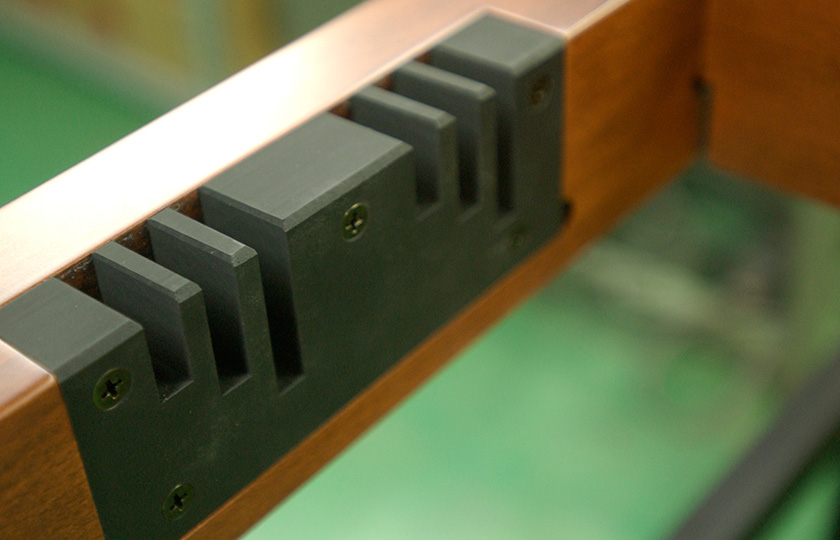How to Play the Marimba
How to perform while producing better notes
How to always make the sound resonate well
With a marimba, the richest resonating can be obtained when the pitch of the tone plate and that of the resonator pipe match one another. However, these two pitches change depending on the temperature and humidity, so they must be made to match before performances. One way of making them match one another is to elongate or narrow the distance between the tone plate and the resonator pipe. Based on the characteristics of the pipes, a wider distance will raise the pitch of one, while a closer distance will lower the pitch. If you think that there is something missing from a note, try changing the position of the pipe. Sometimes the resonator pipe perfectly resonates with a note, producing a gorgeous sound.
Depending on the instrument, the grooves into which all the resonator pipes are set have two or three levels, with the performer being able to choose the position used.

Grooves in which the height of the resonator pipes can be adjusted among three levels
It's not a cart!
Simply because the marimba has casters on the bottom and it is convenient, one sometimes sees people carting around boxes filled with bells and tambourines set on top of the tone plates. However, doing so depresses the frame, bringing the tone plates and the pipes too close together and stopping the production of notes. It is also bad to rest your elbows or body weight on the frame. Though the marimba may be big, it is a delicate instrument, and should be treated with care.
Musical Instrument Guide : Marimba Contents
Origins
Structure
- What kind of instrument is the marimba?
- Inside and outside the resonator pipes
- There is craft to the design of the tone plates, too
- [Experiment1]Tone plate sanding depth and sound pitch experiment
- [Experiment2]Tone plate sanding location and sound pitch experiment
- [Experiment3]Try changing the material of the resonator pipes
